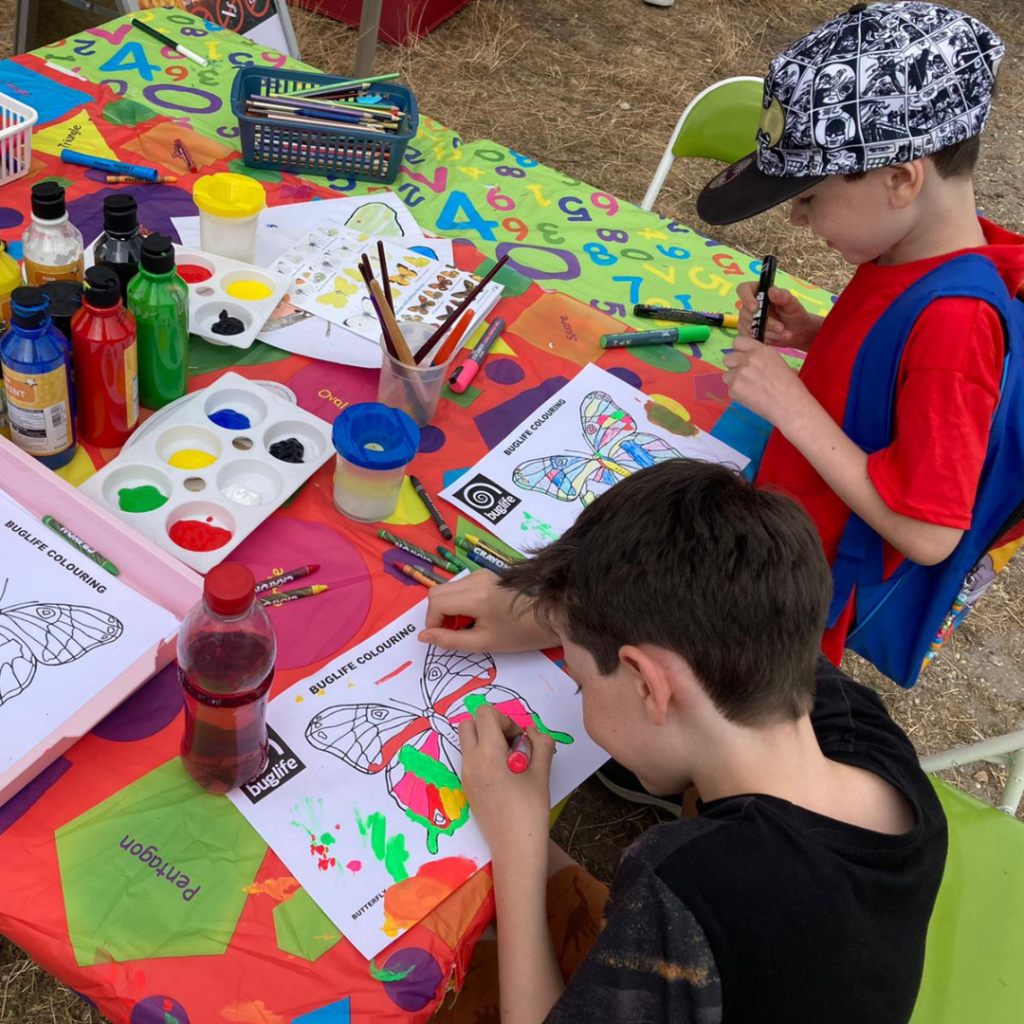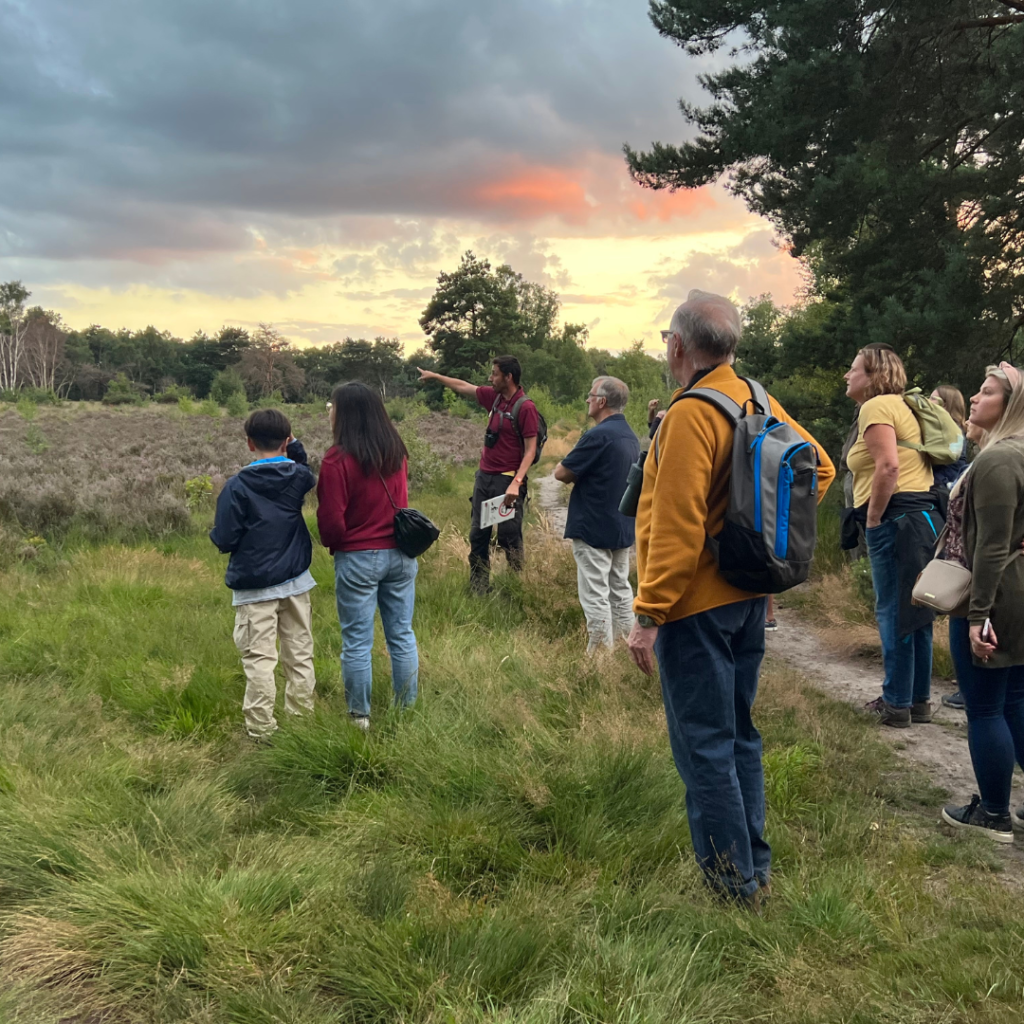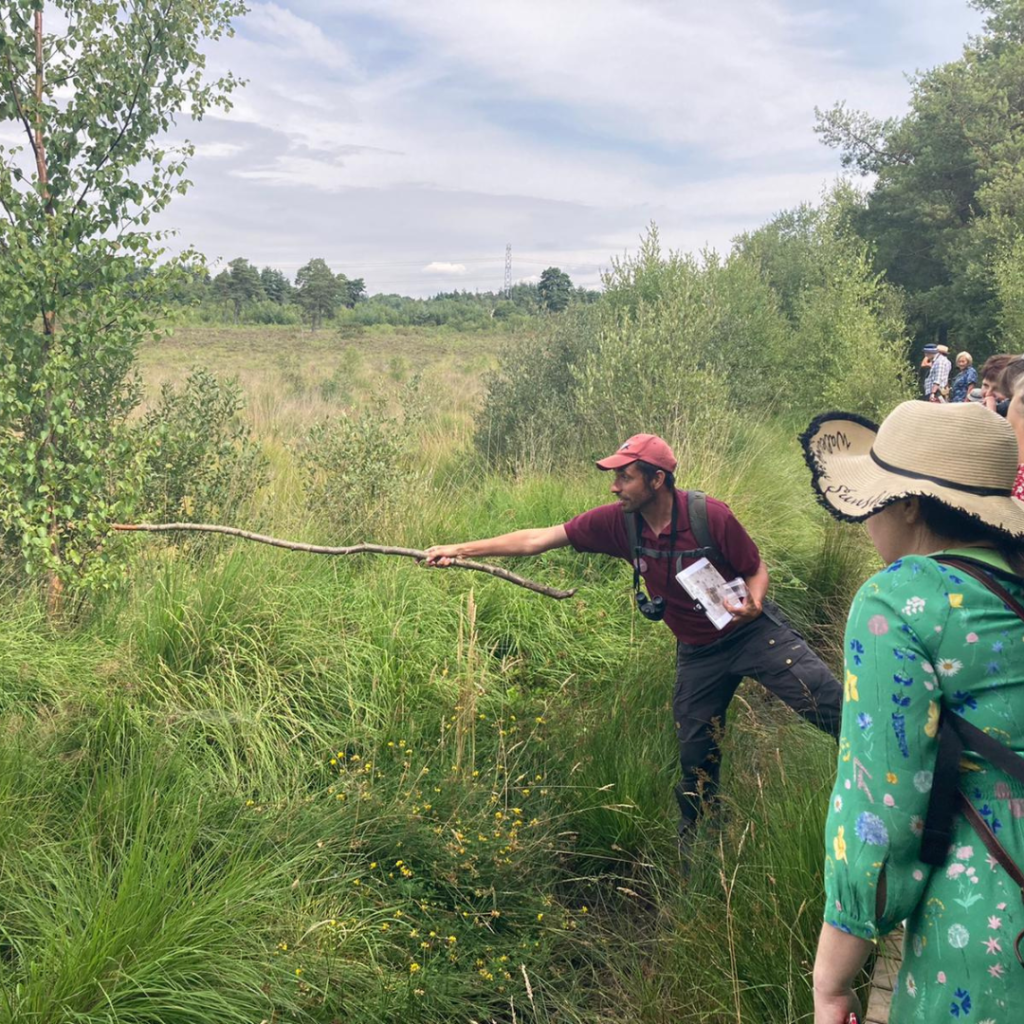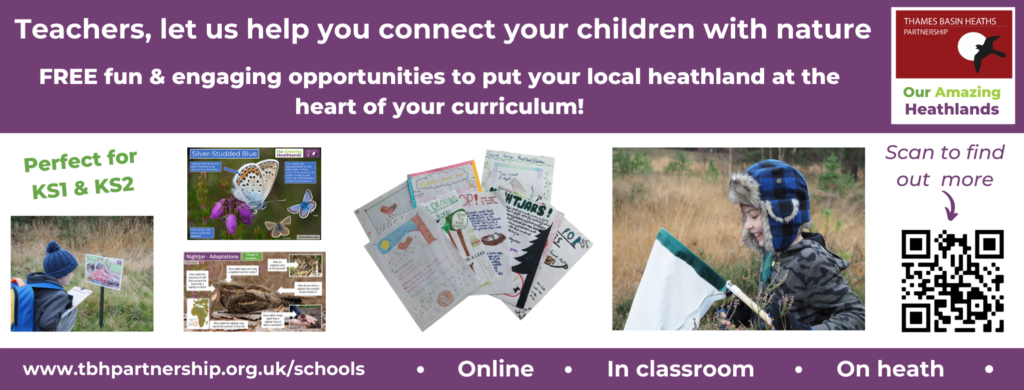My Heath Week by Education Officer Michael
I love nature and am privileged to have a job where I get to share it with people every single day. Spending time outdoors is my favourite thing to do – there is always something to learn and new things to see. Being part of nature is my happy place and so good for my mental wellbeing.
Each year, Heath Week is a perfect opportunity to connect people with their amazing local wildlife and inspire them to take action to help look after their nearby heathlands. It’s brilliant to be able to highlight just how fantastic our close-by wildlife is, but also show just how fragile and under threat it is.
Comms Officer Sarah keeps reminding me that I once said that Heath Week was my favourite time of the year – a quote I wholeheartedly stand by! As a case in point, here is a short recap of my Heath Week 2022.
Butterflies & Other Things with Wings
“Butterfly walk was excellent, with lots to occupy the children”
My week started with an opportunity to share the wonders of one of my favourite groups of species – invertebrates – at one of my favourite places – Chobham Common. Warden Mike and I ran a series of mini-guided walks looking for those tiny creatures that flap, buzz and crawl on our heathlands. Often overlooked, invertebrates are some of the most important building blocks in our ecosystems. They pollinate, tidy up the environment, provide food for other animals and are natural pest controllers – helping to keep a balanced ecosystem. They lead fascinating lives and are beautiful to look at. What a combination!
Despite changeable weather, we encountered a range of butterflies, including the fabulous Grayling – a heathland specialist with the ability to disappear in an instant. The sandy edges of the car park revealed some of the fascinating lifecycle of European Beewolves – wasps that dig long tunnels into the earth, where they lay their eggs and provision each one with a stash of paralysed Honeybees. Gruesome and awesome in equal measure!
Inspired by what they had seen, visiting children painted butterflies and made badges of their favourite discoveries. Fun for everyone!
Three Churrs for Horsell Common
“I feel much more aware of how to be a more responsible visitor and dog walker on the common. Knew nothing about Nightjars before this walk and am now a real fan!”
One of my favourite things to do during a heathland summer is to introduce people to the European Nightjar – one of the UK’s most enigmatic species. Steeped in folklore, these nocturnal birds return to our local heaths from Africa each year to breed. Also known as ‘Fern Owls’, ‘Night Swallows’ and ‘Gabble Ratchets’, Nightjars flap around like bats, make strange noises and people used to think they milked goats – What’s not to like?
One of the best ways to motivate people to do the right thing on their heathland visits and help our amazing ground-nesters, like Nightjars, is to show them just how special they are. It’s also good fun to be out on the heath in the dark!
This season, the Horsell Nightjars were tricky to pin down, but we managed to hear some churring (1900 notes per minute!), some flight calls (eerie ‘kewick’ noises) and some magical flybys. Everyone went away enchanted by the experience. I can’t wait for next May when these wonderful birds return to our heaths once again.
Heathland for Beginners
“I’m so glad I attended and now I can share my new-found knowledge with other people and spread the word on how fortunate we are to have Wildmoor Heath”
Wildmoor Heath was the setting for this walk introducing people to the wonders of our local heathlands. Attendees learned about the history of heathland and how it was a landscape vital to the survival of people for thousands of years. They also discovered just how rare the habitat is and how it is expertly looked after by land managers. We looked for some of the key heathland plants and animals and learned about what people used to use certain plants for and how this shaped the habitat over time.
We spotted a Common Lizard warming itself on the vegetation alongside the boardwalk and an aerobatic Hobby whizzed past in the distance. We kept an ear out for the scratchy song of the Dartford Warbler too.
One of the children in the group had such an amazing knowledge of wildlife – telling everyone about Beewolves, kites and many other things. It is such a pleasure to meet someone so interested in the natural world. A conservationist of the future, perhaps? That would be amazing!
Discovering Nature with your Phone
“My son said the Seek app will revolutionise our walks. Pretty much the only time I’ve been delighted to see him using his phone!“
I love this walk! It highlights just how useful your phone can be in identifying the wildlife around you and how you can use it to record what you see.
On our walk, we used Seek, Merlin Bird ID and iRecord Butterflies. These apps are particularly useful to people who aren’t confident in identifying the plants and animals they see, but can certainly add value to any walk for anyone. They also make becoming a citizen scientist really easy!
We used our phones to identify our three species of heather, gorse, broom and a variety of other flowering plants and trees. A couple of stealthy children even managed to sneak up on a Common Lizard! Several birds were identified by sound in the woodland edges, including Nuthatches, Blue Tits and Great Tits.
Everyone went away keen to identify the wildlife in their gardens and on their walks. Perfect timing for the Big Butterfly Count!
To find out more about becoming a citizen scientist, click here
Roll on Heath Week 2023!
What a great week, full of many highlights. I met lots of wonderful people. It is fantastic to know that so many of you are interested in your local wildlife!
To see more photos from Heath Week 2022, visit our gallery
Get involved
If you’d like to connect your children (or yourself!) with local wildlife, please get in touch as we offer a variety of fun sessions for schools and community groups – both inside and out on the heath. We also deliver evening talks about heathland and our project either remotely or in person.
For more information on our schools programme – Our Amazing Heathlands – visit www.tbhpartnership.org.uk/schools or email me directly at tbhschools@naturalengland.org.uk
Michael Jones
Education Officer





